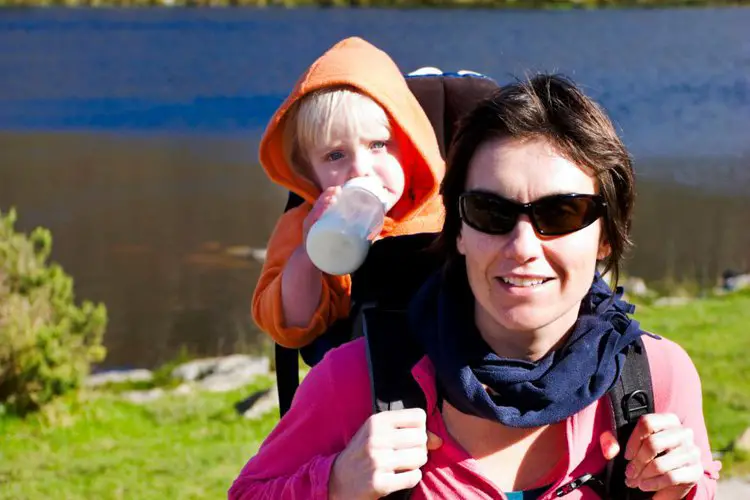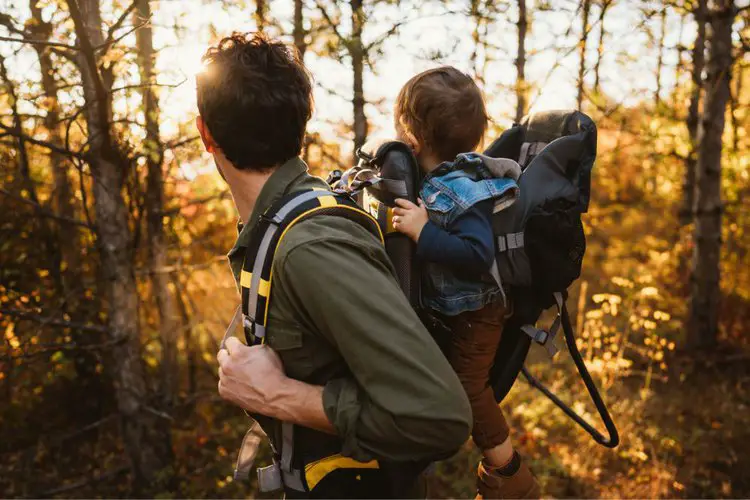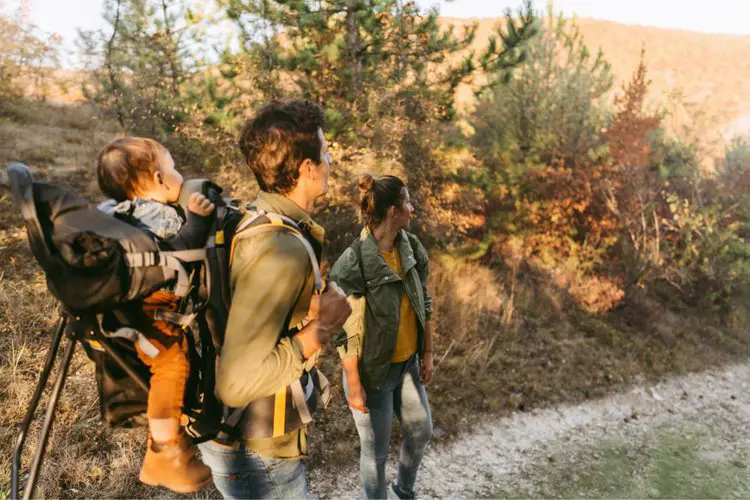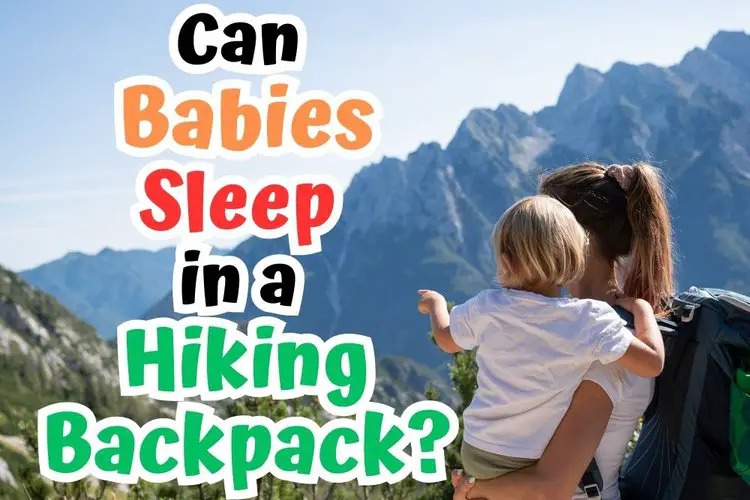Are you a hiking enthusiast and a parent at the same time? If so, you might be wondering if your baby can sleep in a hiking backpack while you’re on the trail.
After all, carrying your little one in a backpack is a great way to enjoy the outdoors together and get some exercise at the same time.
But is it safe and comfortable for your baby to sleep in a hiking backpack? Let’s take a closer look!
Key takeaways:
- Babies can sleep in hiking backpacks, but it is important to keep in mind their age and development, positioning, duration of sleep, and temperature.
- Always follow the manufacturer’s guidelines and instructions for fitting and adjusting the backpack to ensure your baby’s safety.
- Take breaks often and give your baby the opportunity to stretch and move around to avoid discomfort or stiffness.

Contents
Sleeping in a Hiking Backpack: Yes or No?
Babies can sleep in hiking backpacks because these backpacks are designed to provide support and comfort for both the baby and the wearer.
The backpacks have a structured frame that distributes the weight evenly across the back, hips, and shoulders, making it easier to carry a baby for extended periods.
The straps and support system are adjustable to ensure a proper fit for the wearer, which can also improve the comfort of the baby.
Additionally, most hiking backpacks have a padded and adjustable seat for the baby, which helps to provide proper alignment and support for their developing spine and neck.
This seat also ensures that the baby is in a secure position that doesn’t restrict their breathing or circulation, which is important for their safety and well-being.
Furthermore, hiking backpacks often have a canopy or sunshade that can protect the baby from the sun, wind, and rain. This can help to regulate the baby’s temperature and create a comfortable environment for them to sleep in.
Overall, hiking backpacks provide a safe and comfortable way for babies to sleep while on the trail, as long as the baby is of appropriate age and development and the backpack is adjusted and fitted properly.

So, the simple answer is yes, babies can sleep in a hiking backpack, but with some important considerations. Here are some things to keep in mind:
- Age and Development:
Most hiking backpacks are designed for babies who are at least six months old and can sit up on their own.
This is because the backpack’s design requires the baby to have proper head and neck control to prevent suffocation or injury.
- Positioning:
When your baby falls asleep in a hiking backpack, it’s important to ensure that they are in a comfortable position that doesn’t restrict their breathing or circulation.
You may need to adjust the backpack’s straps or support system to accommodate your baby’s sleeping posture.

- Duration:
While it’s okay for babies to nap in a hiking backpack, it’s not recommended for them to sleep for extended periods.
A baby’s developing spine and neck need proper support and alignment, which can be compromised when sleeping in a backpack for long periods.
Plan for regular breaks and opportunities for your baby to stretch and move around.
- Temperature:
Keep in mind that hiking backpacks can be warm and stuffy, especially during hot weather.
Make sure your baby is dressed appropriately for the temperature and has plenty of ventilation and access to water.
Example: The Osprey Poco Child Carrier
- Built-in sunshade easily stores and deploys for convenient UV protection
- Removable and washable soft-to-the-touch drool pad
- Cord loops and mesh pockets provide child access to toy and pacifier storage
Last update on 2023-11-11 / Affiliate links / Images from Amazon Product Advertising API
Babies can sleep in The Osprey Poco Child Carrier because it is designed with a comfortable and supportive seat that keeps the baby’s spine and neck aligned.
It has an adjustable headrest and padded shoulder straps to ensure proper support and comfort for the baby.

Additionally, the backpack has ample ventilation to prevent overheating, and it is designed with a sturdy frame and safety harness to ensure the baby’s safety while on the trail.
Overall, the design and features of the Osprey Poco Child Carrier make it a safe and comfortable option for babies to sleep in while on hiking trips.
Notes
Here are some additional notes to keep in mind when considering whether babies can sleep in hiking backpacks:
- Always follow the manufacturer’s guidelines and instructions for fitting and adjusting the backpack to ensure your baby’s safety.
- Consider the length and difficulty of your hike, as well as the weather and temperature, when deciding whether to use a hiking backpack for your baby.
- Take breaks often and allow your baby to stretch and move around to avoid discomfort or stiffness.
- Never leave your baby unattended in a hiking backpack, even when they are sleeping.
Remember that every baby is different, and what works for one may not work for another. Pay attention to your baby’s cues and comfort level when using a hiking backpack.

There is no specific type of hiking that you should choose when carrying your baby in a hiking backpack. However, it’s important to choose a trail that is safe and appropriate for both you and your baby.
This means selecting a trail with suitable terrain, distance, and elevation gain based on your experience level and fitness as well as the capabilities of your baby.
It’s also a good idea to choose a trail that has plenty of shade and water sources, especially if you plan to be out for an extended period.
When hiking with a baby in a backpack, it’s important to be mindful of the weight and the potential strain on your back and joints.
Start with shorter, less challenging hikes to build up your strength and stamina before attempting longer, more strenuous hikes.
Overall, the type of hiking you choose should be based on your abilities and preferences as well as the safety and comfort of your baby.
Conclusion
In conclusion, yes, babies can sleep in hiking backpacks, but with some important considerations.
Always prioritize your baby’s safety and comfort when using a hiking backpack, and make sure to follow the manufacturer’s guidelines and instructions.
With the right backpack and proper precautions, you and your little one can enjoy the great outdoors and make lasting memories together.


